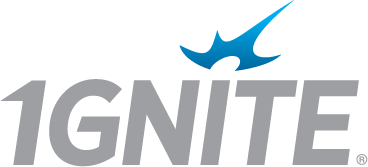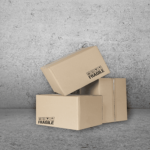Disaster Recovery Cost Reduction
The 6 Best Practices That WorkDisaster recovery programs for retailers are just like car insurance policies for drivers: you hope you never have to use them – but you must have one. From things like fires and natural disasters to rioting and civil unrest, retail stores are vulnerable to damage every day. As soon as the word “emergency” is added to the scope of a repair or remediation project, you can automatically expect to see higher rates based on the urgency of need. While it is true that requiring a team of technicians to be deployed in a matter of hours is more expensive than scheduled services, the following six best practices will help you significantly reduce the cost of your disaster recovery program and make it a less stressful experience.
Disaster Recovery Best Practice 1: Plan Ahead
The best time to work out the details of your disaster recovery program is obviously before a disaster occurs. One of the main elements to establish is a curated list of service providers that have been thoroughly vetted and are ready to be dispatched to address any damages to our retail stores, restaurants, hotels, warehouses, or other facilities. Having the right companies on speed-dial in the event of a disaster can mean the difference between recovering smoothly and extending the disaster into the clean-up phase. The selection criteria are based on the specificities of your operations, but we have put together a list of what to look for in an emergency cleaning company to get you started, including a checklist you can use to compare potential vendors.
Disaster Recovery Best Practices 2: Get Standardized Pricing.
For every type of repair required by your operation, ideally, you should have pre-negotiated rates for scheduled, on-call, and emergency responses. We recommend that you mine your historical records to establish the list of services needed on a regular basis, then group them by category such as window repair, door repair, water damage, fire damage, storm damage for example.
Let’s take the window repair example: If your operation includes storefront locations by a coast, there is a high probability that your windows will need to be boarded before a hurricane. The steps to prevent or repair damages to those windows are the same: A company will come in to measure the windows and board them. After the storm, they will then order the glass to replace any broken panes and will come back to install the new windows.
We recommend that you make an inventory of the window sizes and request quotes to board only as well as to board and repair. Based on the information received you can then establish the standardized scope of work and negotiate fixed terms with the companies you selected.
The results are a standardized scope of work based on a type of incident to remedy, standardized prices for all stores within a specific geographic area, and the ability to forecast the annual expense using the historical incident count. Once you have a contracted rate that clearly defines that that window repair for store type A will cost no more than $450 while a repair for store type B will never exceed $750 for example, it makes managing the incident a lot easier. No need to look for vendors at the last minute, no time wasted in back-and-forth communication to establish what is required to do, and no surprises when you receive the final invoice.
Be Clear on What You Need.
Whether you are developing the standardized pricing or addressing an event that never happened before, it is essential to clearly define the scope of the project. The more room you leave for interpretation and assumption is exposure to increased rates and surprise price spikes. The more specific you are about what your disaster recovery plan includes for each scope of work you develop, the less you’ll end up spending in the long run. Historical data is an important tool, use it to your advantage.
#4 Not Every Emergency Requires Emergency Rates.
Not all emergencies are created equally. Just because a project genuinely requires your immediate attention doesn’t mean you should have to pay actual “emergency” rates for every step of the clean-up process. For instance, if there is a small fire in one of your facilities and an employee deploys a fire extinguisher to put it out, the cleanup of the residue from the fire extinguisher isn’t as intensive as addressing a major fire. There is no water to be removed, there is probably no need to deploy air scrubbers and air movers to clean the air. It could be something as simple as wiping down the inventory with the proper concentration of cleaning agents to safely remove all traces of soot and extinguisher residue. Make sure you’re working with a company that understands that there should be flexibility built into every scenario.
Disaster recovery Best Practice # 5: Use Predictive Analytics
Your historical data is a wealth of information that should be used to proactively address recurring issues. For example, it may be prudent to ensure that every storefront facility that is routinely hit by tornadoes or hurricanes have precut board stored in the back of the facilities. Or if a facility has been damaged by delivery trucks three times in the last three years, it may be worthwhile to look into ways to integrate protective measures such as lighted fixed bollards for example.
Disaster Recovery Best Practice # 6 Scorecard Every Job
Finally, because numbers don’t lie, keeping track of every job that is completed by a vendor is the only way to ensure that the jobs are being done right the first time, every time. In a situation where a vendor has to come back several times to complete a job is more time that your store is not open. We recommend establishing a scorecard based on factors that are important to your operation, communicate it with your vendors, use it to score every job, and share the results both internally and with your vendors.
The scorecard could include ratings around the time to respond, the time to complete the project, the cost of the project, the quality of the documentation provided, the quality of overall communication offered. Keeping track of the jobs a vendor has done is the only way to make sure that the process is efficient, and efficiency is the main factor in saving money.
1GNITE has extensive experience in helping retailers deal with disaster recovery. We have put together plans for major retailers that make sure that no matter what happens, their stores will be cleaned up, their inventory will be handled, their assets will be managed, and they will get back to normal operations as fast as possible – at a price that makes sense to their bottom line. Contact us today and let’s get started on a disaster recovery plan that will give you peace of mind to be prepared for anything.
-
Circular Economy Definition: Everything You Need to Know
-
Top 5 Benefits Of The Circular Economy
-
ReCommerce Ultimate Guide and 2022 Trends
-
Commercial Emergency Cleaning Services: Definition and Expectations
-
How To Find The Best Emergency Cleaning Company
-
The Only 3 ReCommerce Metrics Retailers Should Focus on in 2022











